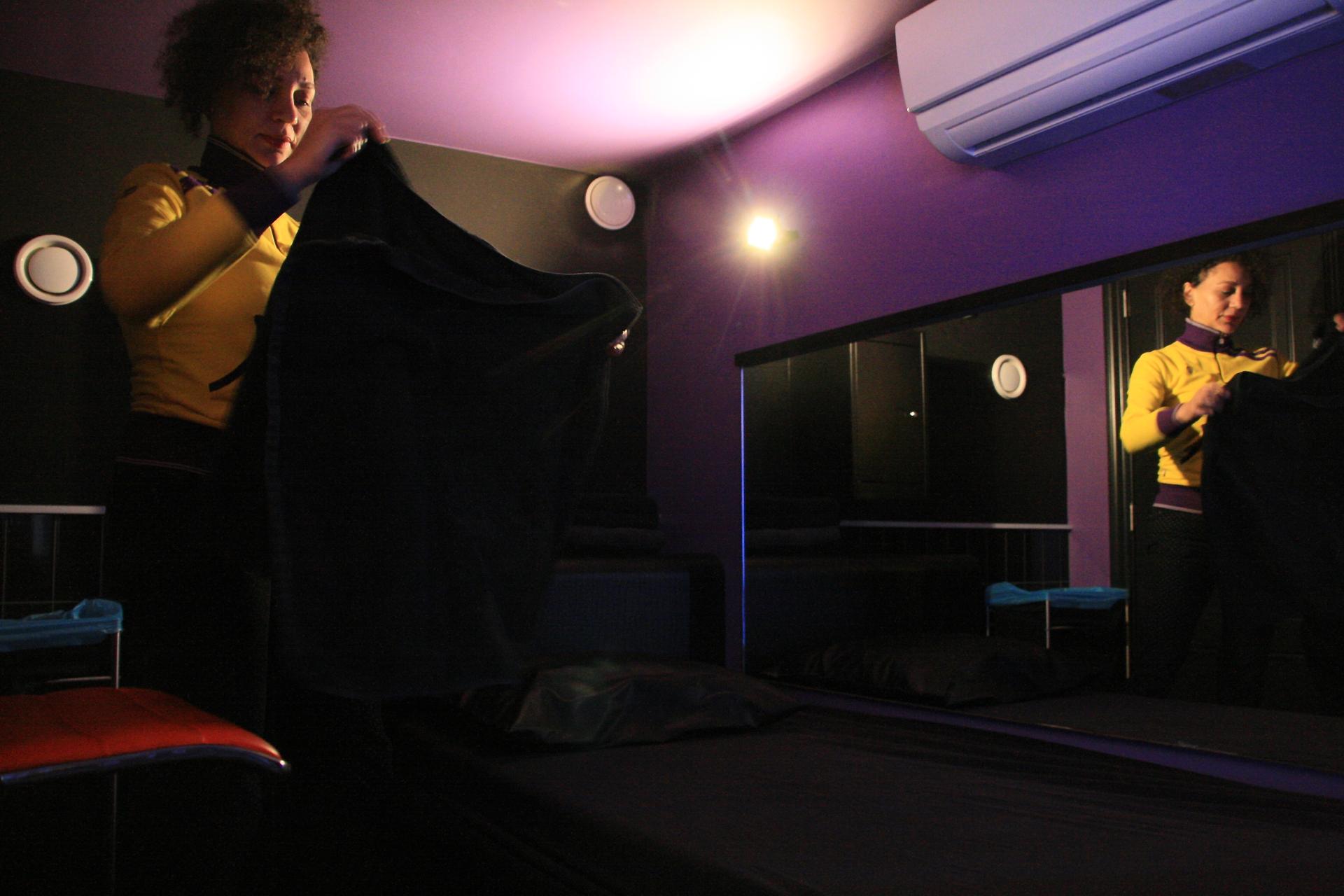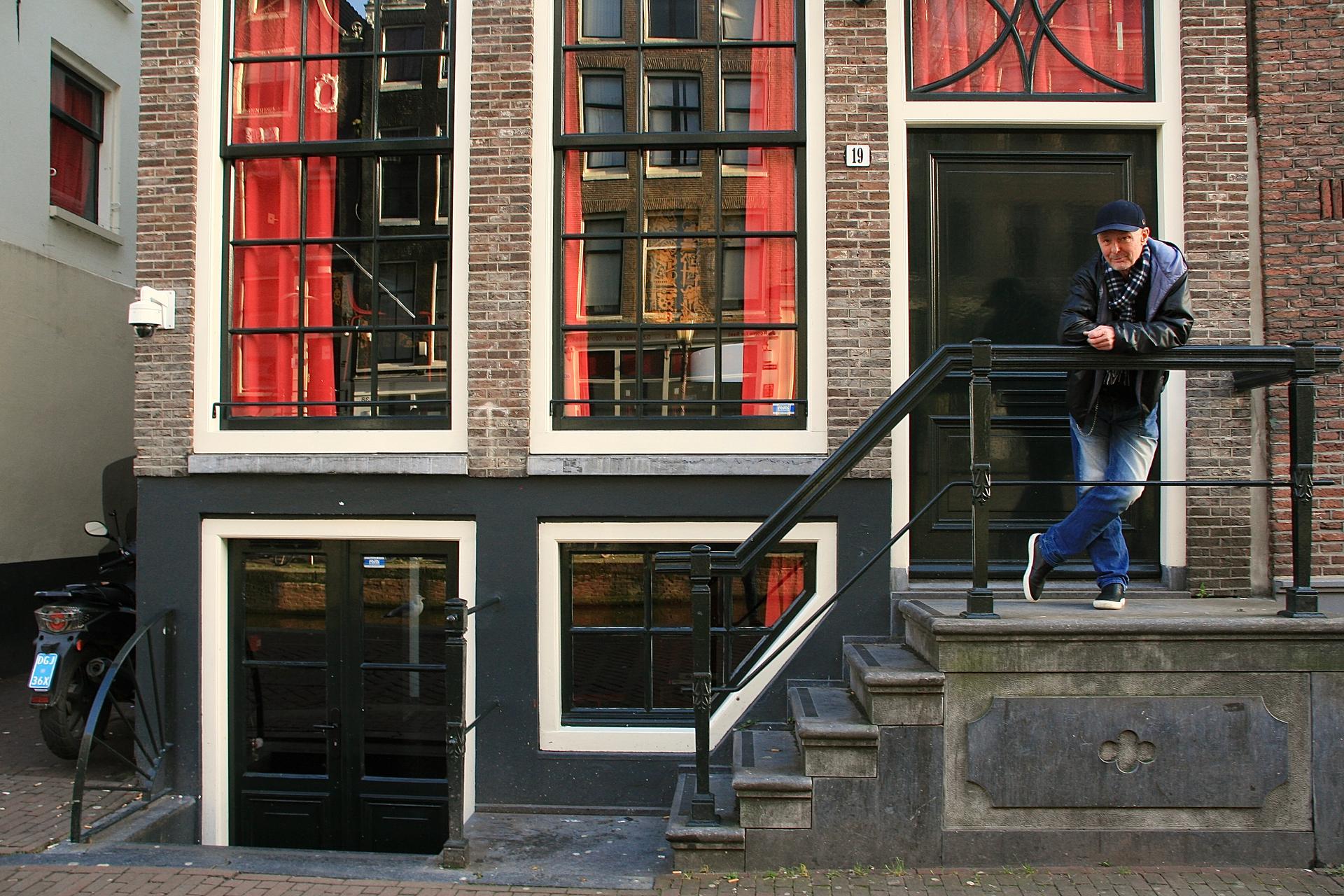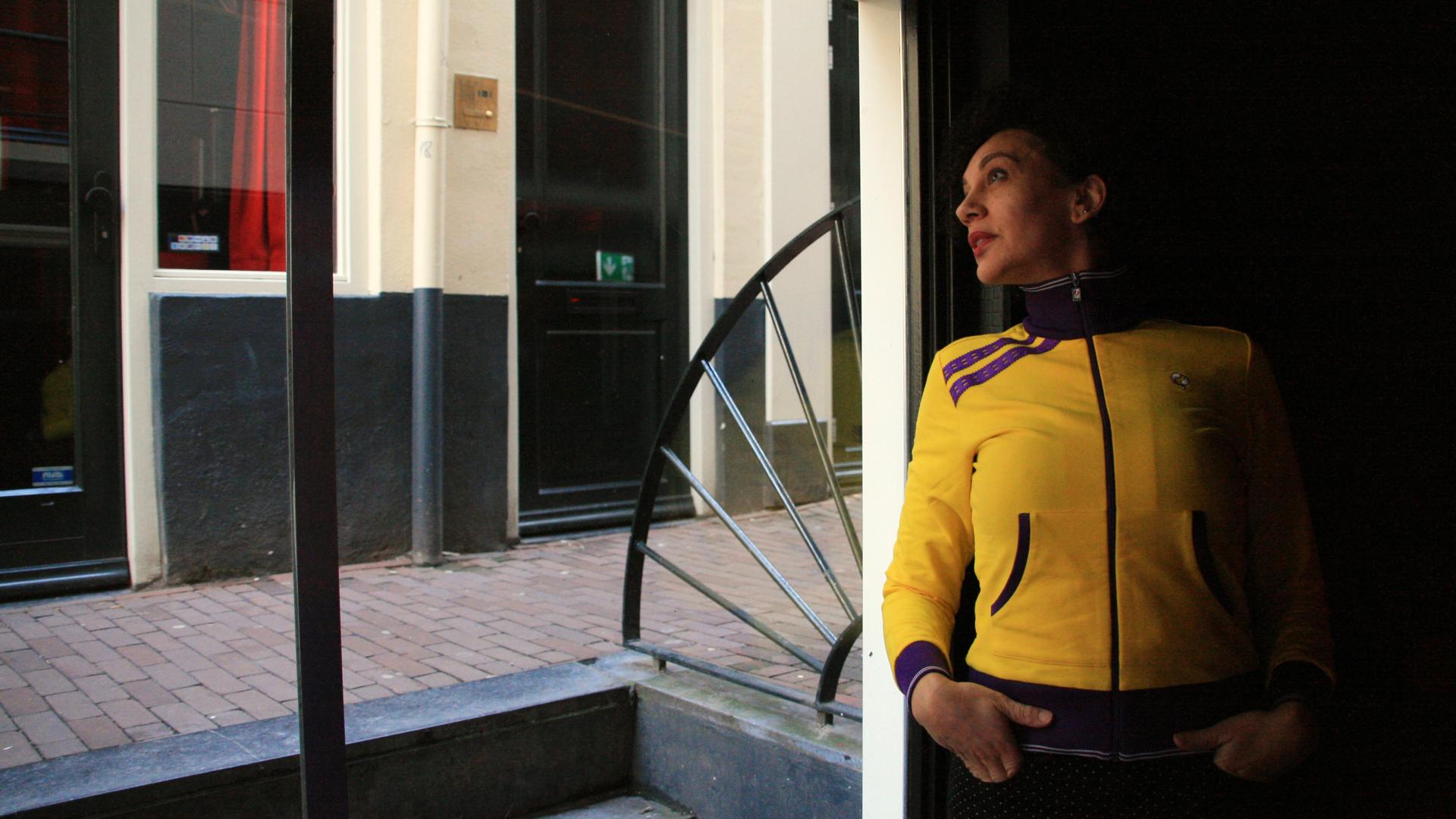A Dutch brothel where women work for themselves
Nuria, who didn’t want her full name used, is shown at My Red Light, a social project in the form of a brothel in Amsterdam. Nuria plans to retire from sex work later this year and work full time in an administrative role at My Red Light.
From purple and red walls to safes in every room, just about everything at the My Red Light brothel has been designed with input from the women who work there.
It’s also almost completely run by former or current sex workers, something rare in Amsterdam’s world-famous prostitution district. But the most important thing about My Red Light is that its 14 rooms can only be rented by people who have been thoroughly vetted to ensure they are not being trafficked, pimped or exploited.
“It was the initiative of a group of sex workers,” explains board member Marcel Heyman, a former sex worker, himself. As he shows off the brothel’s deluxe room with its bath and dance pole, he says that “they wanted to create a place for themselves where they could work under conditions where they’re safe and also that the place … is completely how they would like it.”
Ever since the Netherlands legalized prostitution in 2000 in an attempt to protect those working in an industry that has flourished for centuries, Amsterdam has been associated with a more liberal approach to sex work. Yet, trafficking and exploitation remain pervasive, with an estimated 3,000 cases a year in the Netherlands, the majority of them women.
My Red Light wants to address this head-on. Although the city requires a vetting procedure to prevent abuse and exploitation throughout the red-light district, it’s not always strictly followed. At My Red Light, says Heyman, it’s a cornerstone of their work. He adds that the high concentration of people who have experience with sex work makes it that much harder for anyone being pimped to slip through the net.
“In other brothels, the people that work there are seen as a product that makes money for the brothel owners. The difference with us is that we are there for our sex workers,” Heyman says.
The women who rent rooms at the brothel aren’t seen as victims who need to be rescued, but as people who have made a choice to work in a legal profession, according to My Red Light. Heyman says they’re treated as entrepreneurs who run their own business and given help to succeed — from banking advice to computer courses to English lessons.
“We are there really to empower our girls,” Heyman says.

One of the sex workers at My Red Light is Nuria, 49, who doesn’t want to give her last name to protect her privacy. Originally from Spain, Nuria has been working as a prostitute since she was 15. She says she got into the business “for independence.” In her 34 years as a sex worker, she says she has never been trafficked or abused.
When she turns 50 later this year and retires from sex work, Nuria plans to work full time in an administrative role for the project.
“I like it because [the] focus isn’t just ‘rent a window to women who can work,’” she says. “Their philosophy is also like my philosophy: help for the woman [to make being] a sex worker like [a] normal job.”
For her colleague, Jane (not her real name), that’s exactly what being a prostitute is: a normal job. Jane started 20 years ago and then stopped when she had a son. Now that her son has moved out, Jane, 41, has returned to sex work on a part-time basis. She works as a nurse during the week and rents a window at My Red Light for €160 ($182) every Saturday for the popular evening shift from 7 p.m. to 4:30 a.m.
“I love sex; I love money; I love to seduce men; I love the exhibitionism,” she says with an unapologetic grin from her chic apartment in the suburbs of Amsterdam. “It’s my rules. If I don’t want [a client], I say, ‘No, thank you.’”
This freedom to do things exactly the way she wants is part of why she was attracted to the My Red Light initiative.
“This project is behind women who want to work independent their way,” Jane says.
“She earns her own money, and there is no one behind her who takes [it] or is pressing her to do something she doesn’t want.”
Another factor is the quality of the rooms, which Jane says can be far from a given, even in the red-light district. She tells a story about visiting a room rented by an old friend just across the canal from My Red Light that was so dirty that “I don’t even want to put my dog in it.”
Still, My Red Light has attracted criticism. For one thing, they’ve struggled to stick to their much-trumpeted policy of hiring only current or former sex workers. And the city bans them from renting rooms to sex workers who solicit clients online, which cuts into their income.

Beyond that, some critics say the initiative is yet another attempt to legitimize an industry that is inseparable from trafficking and exploitation. And others say the brothel doesn’t live up to some of the standards it claims to espouse — and isn’t necessarily any safer than the rest.
“It’s just another brothel,” Yvette Luhrs, a spokeswoman for Proud, the city’s network of prostitutes, told The New York Times. “It isn’t really owned or run by sex workers. Also the media spectacle around it has been derogatory to other brothels.”
But board member Heyman defends the project.
“I think that if somebody decides to do sex work, you can always look behind the decision and ask yourself, ‘Why do they choose this profession?’ and then, of course, it can be poverty; it can be lack of other opportunities,” he says.
“But that’s not the point. The moment somebody takes this decision, then they should be able to work in a safe and secure environment.”
